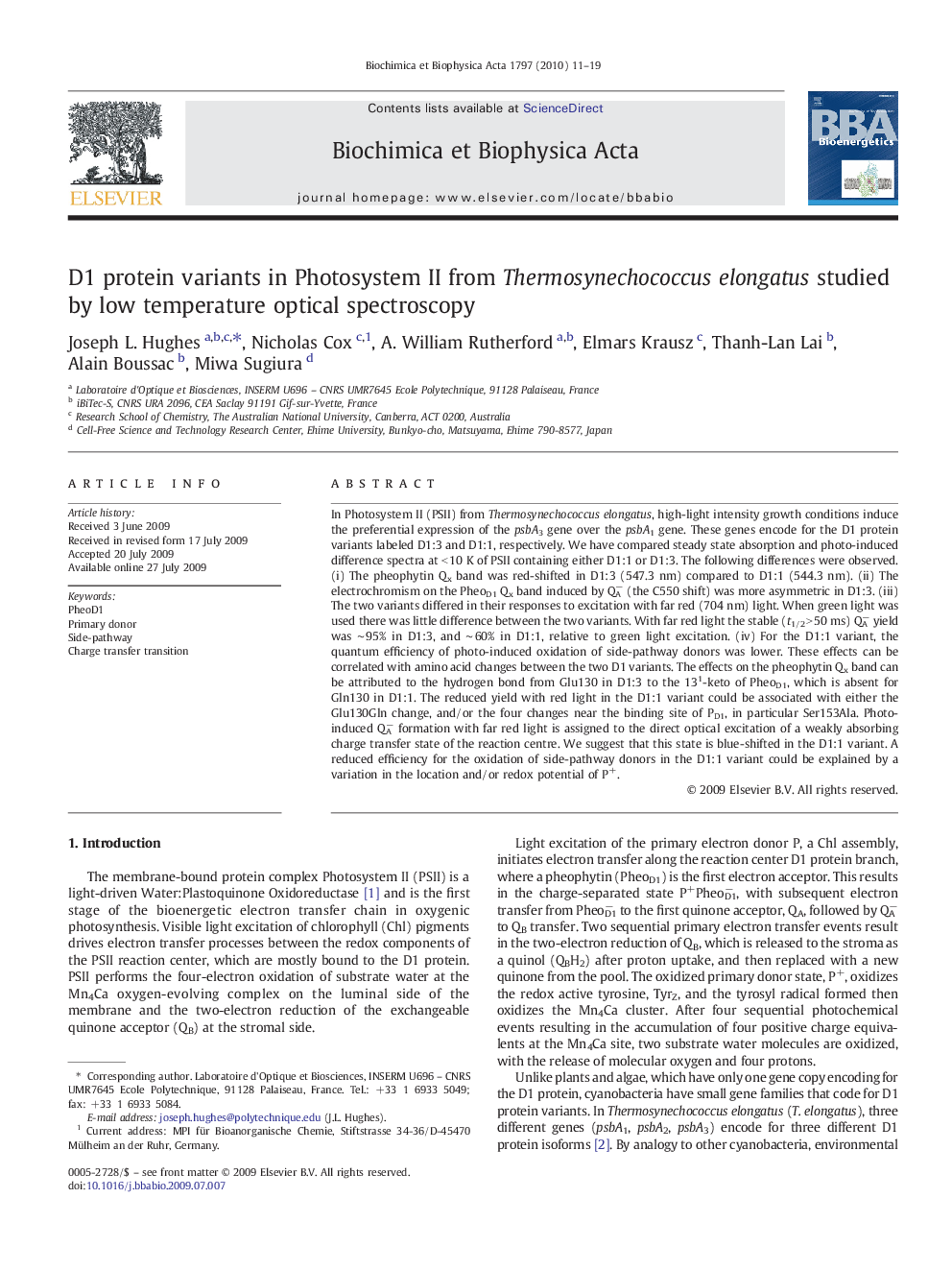| Article ID | Journal | Published Year | Pages | File Type |
|---|---|---|---|---|
| 1942910 | Biochimica et Biophysica Acta (BBA) - Bioenergetics | 2010 | 9 Pages |
In Photosystem II (PSII) from Thermosynechococcus elongatus, high-light intensity growth conditions induce the preferential expression of the psbA3 gene over the psbA1 gene. These genes encode for the D1 protein variants labeled D1:3 and D1:1, respectively. We have compared steady state absorption and photo-induced difference spectra at < 10 K of PSII containing either D1:1 or D1:3. The following differences were observed. (i) The pheophytin Qx band was red-shifted in D1:3 (547.3 nm) compared to D1:1 (544.3 nm). (ii) The electrochromism on the PheoD1 Qx band induced by QA− (the C550 shift) was more asymmetric in D1:3. (iii) The two variants differed in their responses to excitation with far red (704 nm) light. When green light was used there was little difference between the two variants. With far red light the stable (t1/2 > 50 ms) QA− yield was ∼ 95% in D1:3, and ∼ 60% in D1:1, relative to green light excitation. (iv) For the D1:1 variant, the quantum efficiency of photo-induced oxidation of side-pathway donors was lower. These effects can be correlated with amino acid changes between the two D1 variants. The effects on the pheophytin Qx band can be attributed to the hydrogen bond from Glu130 in D1:3 to the 131-keto of PheoD1, which is absent for Gln130 in D1:1. The reduced yield with red light in the D1:1 variant could be associated with either the Glu130Gln change, and/or the four changes near the binding site of PD1, in particular Ser153Ala. Photo-induced QA− formation with far red light is assigned to the direct optical excitation of a weakly absorbing charge transfer state of the reaction centre. We suggest that this state is blue-shifted in the D1:1 variant. A reduced efficiency for the oxidation of side-pathway donors in the D1:1 variant could be explained by a variation in the location and/or redox potential of P+.
